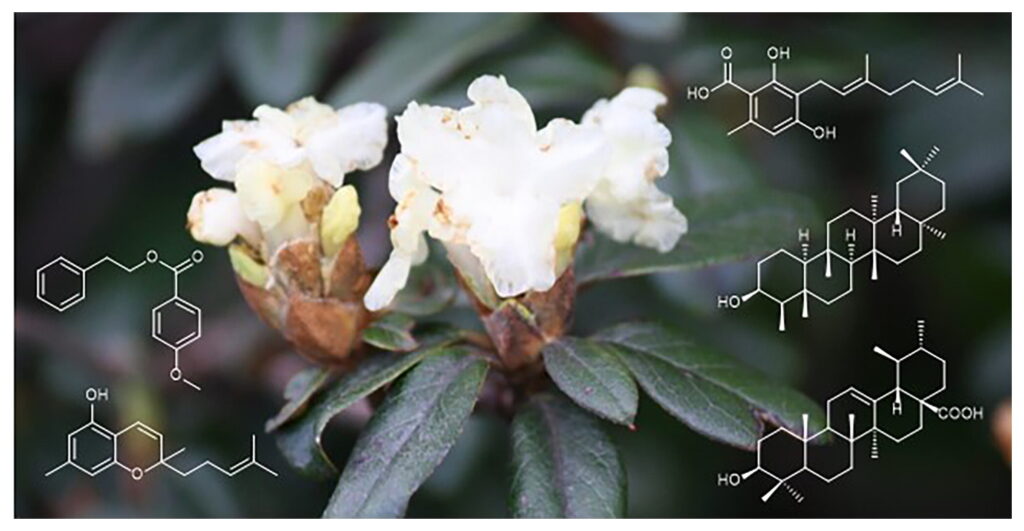Researchers have identified two cannabinoids and three other bioactive compounds in Rhododendron, a plant native to Pakistan that has long been used in traditional medicine.

In a study published in Natural Product Research, scientists from the University of Swat and the Royal Botanic Gardens Kew in the UK analyzed the leaves of Rhododendron anthopogon, a species found in Pakistan’s Swat District. Using column chromatography, the team isolated five compounds, including cannabichromeorcinic acid and cannabigerorcinic acid—both classified as cannabinoids.
The remaining compounds identified were ursolic acid and friedelin, which are triterpenoids, along with 2-phenylethyl 4-methoxybenzoate. The structures were confirmed using nuclear magnetic resonance spectroscopy and mass spectrometry, compared against existing literature.
This is one of the first studies to document the presence of cannabinoid compounds in Rhododendron anthopogon, a plant not previously known for producing these substances. The findings may help explain the plant’s traditional use for ailments such as inflammation and pain, and they suggest a potential pharmacological value that warrants further study.
For the full text of the study, click here.






